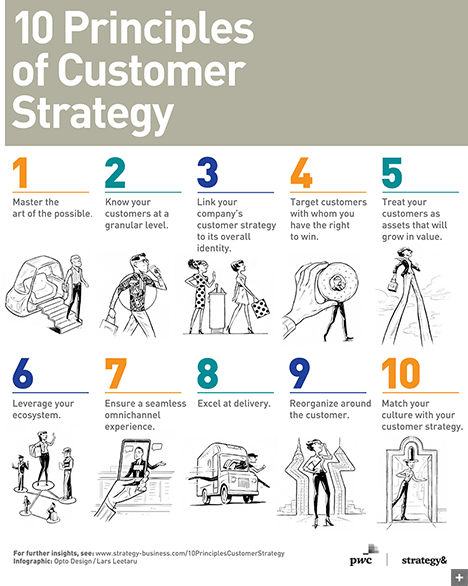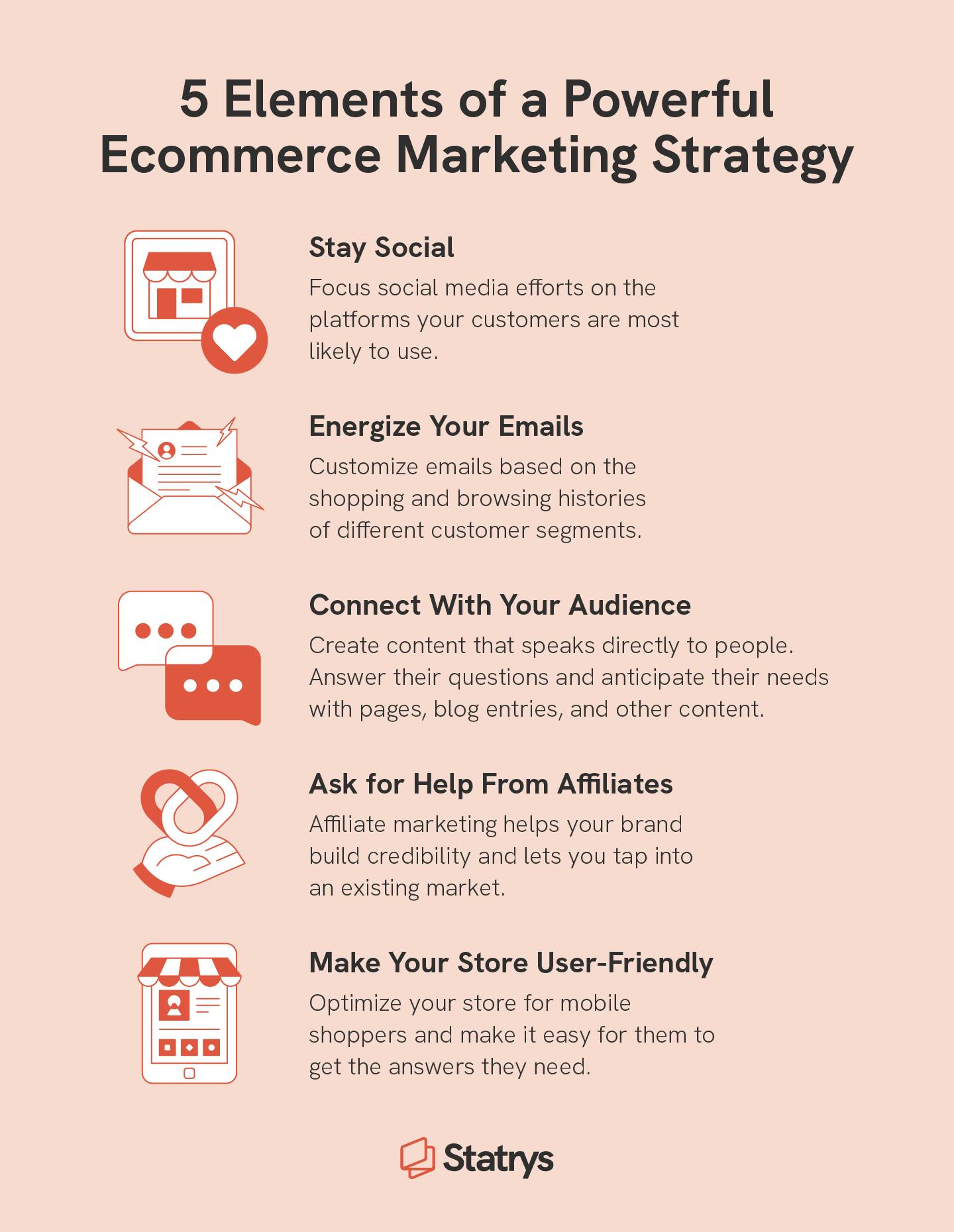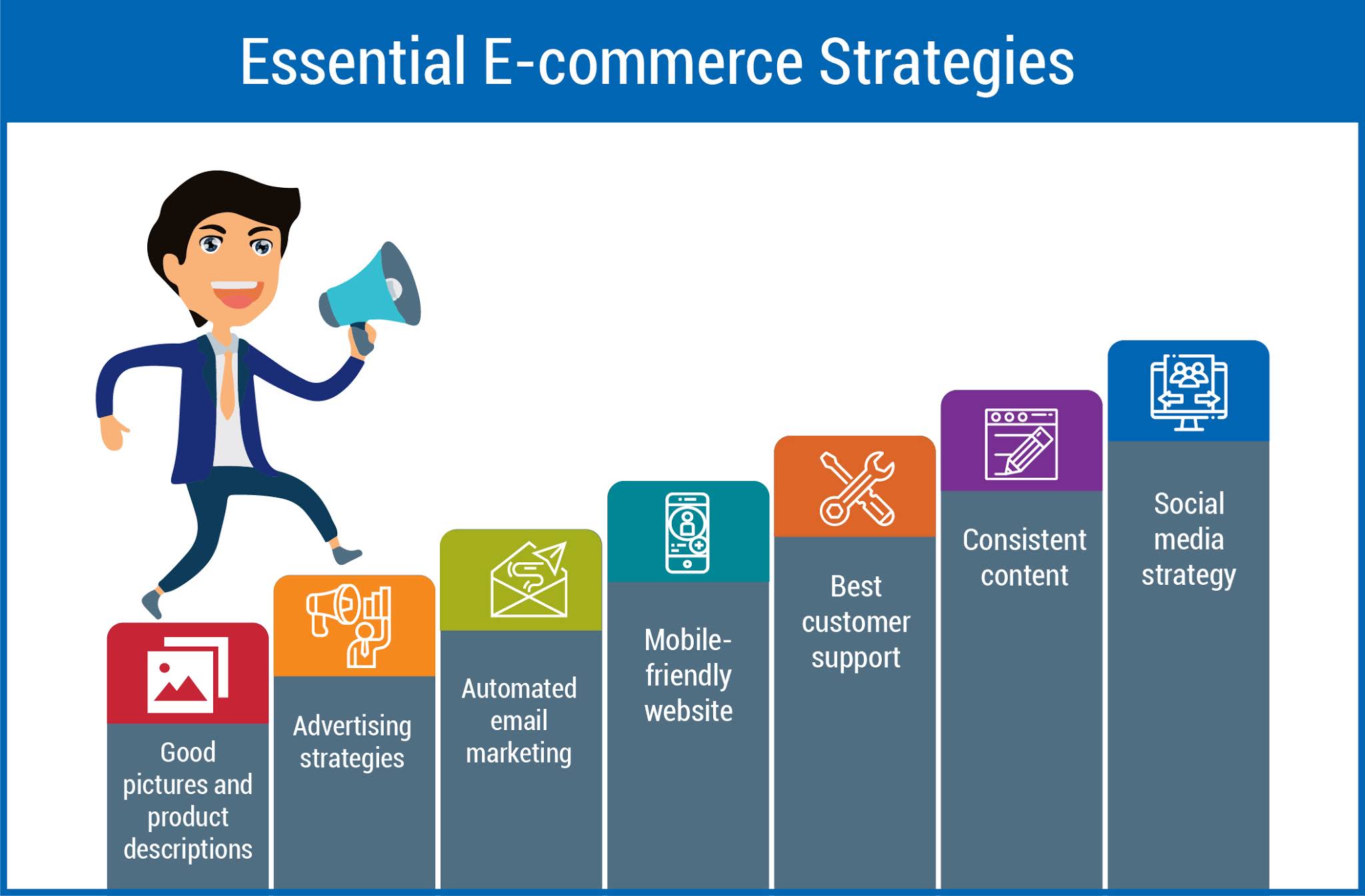Customer service is vital for any e-commerce business. It directly impacts customer satisfaction and loyalty.
In the fast-paced world of online shopping, excellent customer service sets you apart. With countless options available, customers expect quick, efficient, and friendly support. This expectation challenges e-commerce businesses to adopt effective strategies. Good customer service leads to repeat purchases and positive reviews.
It’s the cornerstone of building trust and credibility. By focusing on customer needs, your business can stand out. In this blog, we will discuss key strategies that can help your e-commerce business deliver outstanding customer service. These methods will enhance customer experience and boost your business success. Stay tuned to learn how to keep your customers happy and loyal.
Importance Of Customer Service
Customer service is vital for e-commerce businesses. It’s the first point of contact between a company and its customers. Good customer service can turn a one-time buyer into a loyal customer. It also helps build a strong brand reputation. Poor service can drive customers away. This section will explore why customer service is so important.
Impact On Sales
Good customer service can directly impact sales. Happy customers are more likely to return. They also tend to spend more. They may even recommend your business to others. This can lead to more sales and growth.
On the other hand, poor customer service can hurt sales. Unhappy customers may leave negative reviews. They may also tell others about their bad experience. This can drive potential customers away. Therefore, investing in good customer service can boost sales.
Building Customer Loyalty
Customer loyalty is crucial for long-term success. Good customer service can help build this loyalty. When customers feel valued, they are more likely to return. They may even become brand advocates. These loyal customers can provide free word-of-mouth advertising. This can attract new customers.
Building loyalty takes time. It requires consistent, high-quality service. But the benefits are worth the effort. Loyal customers tend to spend more over time. They are less likely to switch to competitors. This stability can lead to steady growth for your business.

Credit: www.cio.com
Understanding Customer Needs
In the bustling world of e-commerce, understanding customer needs is paramount. Every business owner dreams of happy, loyal customers. But how do you achieve that? The secret lies in truly understanding what your customers want and need. This involves listening to their feedback, anticipating their desires, and adapting your services to meet their expectations. Let’s dive into some key strategies to help you get a better grasp on your customers’ needs.
Conducting Surveys
One of the simplest yet most effective ways to understand customer needs is through surveys. These can be quick and to the point, or more detailed, depending on what information you’re seeking.
- Short Surveys: These are great for getting quick feedback. Ask questions like “How satisfied were you with your purchase?” or “What can we do to improve?”.
- Detailed Surveys: These can provide deeper insights. Questions can cover a range of topics, such as product quality, customer service experience, website usability, and more.
Keep the questions simple and the survey short to respect your customers’ time. The easier it is for them to complete, the more responses you’ll get.
Analyzing Feedback
Once you’ve gathered feedback, the next step is to analyze it. This is where the magic happens. Analyzing feedback helps you spot trends, understand common complaints, and identify areas for improvement.
- Look for Patterns: Are multiple customers mentioning the same issue? This could signal a significant area that needs attention.
- Positive Feedback: Don’t just focus on the negatives. Positive feedback can tell you what you’re doing right, which is just as important!
Consider using tools or software to help categorize and quantify feedback. This can make it easier to identify actionable insights. For example, if numerous customers mention slow delivery times, it might be time to review your shipping processes.
Understanding customer needs doesn’t have to be a daunting task. By conducting surveys and analyzing feedback, you can gain valuable insights that will help you improve your e-commerce business and make your customers happier. And who doesn’t want that?
Personalizing Customer Interactions
In the crowded world of e-commerce, standing out can be a challenge. One powerful way to differentiate your business is by personalizing customer interactions. This means tailoring your approach to meet each customer’s unique needs and preferences. Let’s dive into two key aspects of this strategy.
Tailored Recommendations
Think about the last time you received a product recommendation that felt like it was made just for you. It probably left a good impression, right? Tailored recommendations can have the same effect on your customers.
- Understand Customer Preferences: Use data from past purchases, browsing history, and customer profiles to make relevant suggestions. For example, if a customer frequently buys sports gear, recommend new arrivals in that category.
- Use Technology: Implement recommendation engines that analyze customer data to predict what they might like. These tools can help in offering personalized suggestions without manual effort.
- Keep it Simple: Don’t overwhelm customers with too many options. A few well-chosen recommendations can be more effective than a long list.
Personalized Communication
Imagine receiving an email that starts with, “Dear Customer.” Now, compare that to one that begins, “Hi [Your Name], we thought you’d love these new arrivals!” The latter is more engaging, isn’t it? Personalizing communication can make your customers feel valued and understood.
| Method | Details |
|---|---|
| Email Personalization | Use the customer’s name and tailor the content based on their interests. Mention products they viewed or similar items they might like. |
| Live Chat | Address customers by name and refer to their past interactions or purchases to make the conversation more relevant. |
| Social Media | Engage with customers on social platforms by responding to their comments and messages in a personalized manner. |
By focusing on personalized communication, you can build stronger relationships with your customers. They’ll appreciate the effort and are more likely to return for future purchases.
To sum up, personalizing customer interactions in your e-commerce business can enhance the customer experience and foster loyalty. Whether through tailored recommendations or personalized communication, the key is to make every customer feel special. And remember, a happy customer is a repeat customer!
Effective Communication Channels
Effective communication channels are the backbone of exceptional customer service in e-commerce businesses. These channels not only help in resolving customer issues but also foster strong relationships and trust. In this section, we will explore three vital communication channels that can elevate your customer service: live chat support, email, and social media.
Live Chat Support
Live chat support is like having a friendly store assistant available 24/7. It’s immediate, convenient, and personal. Customers appreciate the quick responses they receive through live chat. This channel helps in resolving issues in real-time, which can significantly improve customer satisfaction.
Here are some benefits of using live chat support:
- Instant Response: Customers don’t have to wait for hours or days to get answers.
- Multitasking: Agents can handle multiple chats simultaneously, increasing efficiency.
- Personalization: Agents can use customer data to provide tailored solutions.
Imagine a customer struggling with the checkout process. A quick chat can resolve the issue, preventing cart abandonment and ensuring a smooth shopping experience.
Email And Social Media
While live chat offers immediacy, email and social media provide flexibility and a broader reach. Both channels are essential for comprehensive customer service strategies.
| Channel | Advantages |
|---|---|
|
|
| Social Media |
|
Email is perfect for issues that require detailed explanations or documentation. Customers can read and respond at their convenience, making it a flexible option. However, ensure your responses are prompt and helpful.
Social media, on the other hand, is a powerful tool for engagement. It allows businesses to interact with customers publicly, showcasing their dedication to customer service. A witty tweet or a helpful comment can do wonders for your brand’s image.
For instance, a humorous yet helpful reply on Twitter can go viral, bringing positive attention to your business. Or, a well-crafted email can turn a disgruntled customer into a loyal advocate.
In conclusion, combining these communication channels effectively can create a seamless and satisfying customer service experience. By offering live chat, email, and social media support, e-commerce businesses can cater to diverse customer preferences, ensuring everyone feels heard and valued.
Efficient Problem Resolution
In the world of e-commerce, providing stellar customer service is not just a nice-to-have; it is essential. One of the most critical aspects of customer service is efficient problem resolution. When customers encounter issues, how quickly and effectively you resolve their problems can make or break their experience with your brand. Let’s dive into some strategies that can help your business excel in this area.
Handling Complaints
When customers have complaints, it is crucial to handle them with care. A well-handled complaint can turn a dissatisfied customer into a loyal one. Here are some tips for effectively managing complaints:
- Listen Actively: Allow the customer to express their concerns without interruption. Show empathy and understanding.
- Acknowledge the Issue: Confirm that you have understood the problem and reassure the customer that it will be addressed.
- Stay Calm and Professional: Even if the customer is upset, remain composed and polite. Your demeanor can help defuse the situation.
Offering Solutions
Once you have a clear understanding of the complaint, it is time to offer solutions. Providing effective solutions not only resolves the issue but also builds trust. Consider the following strategies:
- Provide Multiple Options: Whenever possible, offer the customer a choice of solutions. For example, they might prefer a refund over a replacement.
- Act Quickly: Time is of the essence. The faster you can resolve the issue, the happier the customer will be.
- Follow Up: After the solution is implemented, follow up with the customer to ensure they are satisfied with the outcome.
By mastering these strategies, your e-commerce business can handle complaints and offer solutions efficiently, ensuring a positive customer experience.

Credit: www.strategy-business.com
Implementing Ai And Automation
Implementing AI and automation in customer service can greatly benefit e-commerce businesses. These technologies improve response times and enhance the customer experience. They also reduce operational costs. By integrating AI and automation, businesses can handle high volumes of queries efficiently. Below are some effective strategies for using AI and automation in customer service.
Chatbots
Chatbots are AI-powered tools that interact with customers in real-time. They can answer common questions and guide users through the purchasing process. Chatbots are available 24/7, providing instant support. This ensures customers receive help at any time, day or night. Chatbots can handle multiple queries simultaneously. This reduces wait times and increases customer satisfaction.
Automated Responses
Automated responses are pre-set answers to frequently asked questions. They save time for customer service teams. Automated responses ensure that customers receive quick and consistent information. They can cover a range of topics, such as order status or return policies. This allows human agents to focus on more complex issues. Automated responses can be personalized using customer data. This makes interactions feel more tailored and engaging.
Training Customer Service Teams
Training customer service teams is crucial for e-commerce businesses. Well-trained teams handle customer inquiries efficiently. They improve customer satisfaction. Happy customers lead to repeat business. Training ensures that your team meets and exceeds customer expectations.
Skills Development
Skills development is the foundation of effective customer service. Train your team in communication skills. Clear communication helps resolve issues quickly. Teach problem-solving skills. Equip them with product knowledge. They should understand every feature and benefit. This knowledge helps answer questions confidently. Role-playing can be a useful tool. It prepares them for real-world scenarios. Encourage empathy. Understanding customer feelings builds trust.
Ongoing Education
Ongoing education keeps your team updated. The e-commerce world changes fast. Regular training sessions are essential. Introduce new tools and technologies. They should know how to use them. Customer service trends evolve. Teach them the latest practices. Encourage continuous learning. Offer online courses and workshops. A well-informed team provides better service. Monitor their performance. Provide feedback and support. This helps them improve constantly.

Credit: statrys.com
Measuring Customer Service Performance
In the fast-paced world of e-commerce, providing top-notch customer service is essential. But how do you know if your efforts are paying off? Measuring customer service performance is crucial to understand how well your team is meeting customer needs. This involves tracking various metrics and gathering feedback to continuously improve. Let’s dive into the key aspects of this process.
Key Metrics
To gauge your customer service performance, it’s important to focus on specific, measurable metrics. Here are some of the key ones:
- Response Time: How quickly does your team respond to customer inquiries? Faster response times often lead to higher customer satisfaction.
- Resolution Time: How long does it take to resolve a customer’s issue? The quicker the resolution, the happier the customer.
- First Contact Resolution (FCR): This metric measures the percentage of issues resolved on the first interaction. High FCR rates indicate efficient problem-solving.
- Customer Retention Rate: Are your customers coming back? A high retention rate suggests that your service is keeping customers happy.
- Net Promoter Score (NPS): This score indicates how likely your customers are to recommend your business to others. A higher NPS means more satisfied customers.
Customer Satisfaction Surveys
Surveys are a direct way to gather feedback from your customers. They can provide valuable insights into what you’re doing right and where you need to improve. Here are some tips for creating effective surveys:
- Keep it Short: Lengthy surveys can discourage participation. Keep your questions brief and to the point.
- Ask Relevant Questions: Focus on aspects of your service that directly impact the customer experience. For instance, ask about their satisfaction with response times or the helpfulness of your support staff.
- Use a Mix of Question Types: Include a variety of question types, such as multiple-choice, rating scales, and open-ended questions. This will give you a more comprehensive view of customer sentiment.
- Follow Up: If a customer indicates dissatisfaction, follow up with them. This shows that you value their feedback and are committed to improving.
By regularly measuring your customer service performance, you can identify strengths and areas for improvement. This proactive approach not only enhances the customer experience but also boosts your business’s reputation and growth.
Frequently Asked Questions
How Can E-commerce Improve Customer Service?
E-commerce can improve customer service by offering 24/7 support, live chat, personalized recommendations, fast shipping, and easy returns.
What Are The 7 C’s Of Customer Service?
The 7 C’s of customer service are: Communication, Credibility, Consistency, Competence, Courtesy, Creativity, and Commitment. These principles ensure exceptional customer experiences.
What Are The 5 C’s Of E-commerce?
The 5 C’s of e-commerce are Customer, Content, Context, Commerce, and Connection. They ensure customer satisfaction, relevant content, personalized experiences, seamless transactions, and strong relationships.
Which Strategy Would Most Help An E-commerce Business?
Implementing a robust SEO strategy helps an e-commerce business by increasing organic traffic and improving search engine rankings. Optimize product descriptions, use relevant keywords, and enhance the user experience. Leverage social media and email marketing to drive engagement and sales.
Conclusion
Effective customer service boosts e-commerce success. Happy customers return and refer others. Implement these strategies to enhance satisfaction. Train your team well. Offer multiple support channels. Always listen and respond quickly. Personalize interactions to build loyalty. Regularly gather feedback to improve.
With these steps, your e-commerce business will thrive. Customer service is key to long-term success.

